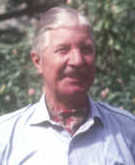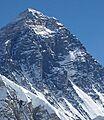1976 British and Nepalese Army Expedition to Everest facts for kids
The 1976 British and Nepalese Army Expedition to Everest was a big adventure! It led to two brave soldiers reaching the top of Mount Everest on May 16. They climbed the difficult South Face. This was only the second time anyone had climbed Everest using this specific route. The first time was just a year before, by the 1975 British Mount Everest Southwest Face expedition. This expedition was a team effort between the British Army and the Royal Nepalese Army. It was led by Tony Streather. The two soldiers who reached the summit were SAS members Bronco Lane and Brummie Stokes.
Getting Ready for the Climb
The British Army has been involved in mountain climbing for a very long time, even since the early 1900s. They helped explore Everest in the 1920s. During World War II, the British Army even had a special group of soldiers trained for mountains.
After the war, the Army continued to explore mountains around the world. A famous climber named John Hunt led a trip to climb a mountain called K36. He later became the leader of the very successful 1953 British Mount Everest expedition, which was the first to reach Everest's summit.
Because of this success, a special club was started for army climbers. It was called the Army Mountaineering Association (AMA) and began in 1957. Its goal is to help soldiers become better at their jobs by encouraging mountain climbing.
Another army officer, Tony Streather, was a very experienced climber. He climbed the world's third-highest mountain, Kangchenjunga, in 1955. He also climbed Tirich Mir five years later. His amazing climbs on K2 and Haramosh made him very well-known in the climbing world. Other army officers also led expeditions, like Major Jon Fleming.
Two SAS soldiers, Brummie Stokes and Bronco Lane, had been part of a 1975 expedition to a nearby mountain called Nuptse. Four people sadly died on that trip. But Stokes and Lane were still determined to climb Everest itself. The next year, they got special permission from the SAS to try to climb Everest with the Army. This expedition was a joint effort between the British and Nepalese Armies, and Tony Streather was in charge.
The Everest Expedition
The team had to walk 200 miles from Kathmandu to the Everest base camp. During this long walk, Stokes and Lane showed everyone how strong and determined they were. They impressed everyone with their toughness, even though they weren't expert rock climbers.
On May 14, Stokes and Lane reached Camp 6, which was very high up at 27,000 feet. They planned to climb Everest's southwest face the next morning. But that night, a terrible storm hit, making it impossible to move. Everyone worried that staying so high up for too long would make them weak. But Stokes and Lane were eager to keep going. "There's only one way we're going," Stokes said over the radio, "and it's not down."
Two days later, they started climbing early in the morning. By mid-afternoon, they had reached the summit! They were completely exhausted. After taking a few pictures at the top, they began their climb down. The danger was not over yet. At 28,000 feet on the way down, they couldn't see anything because of a "white-out" – a condition where snow and clouds make everything look white. They had to stop their descent.
Their oxygen was running out fast. They had to make a quick camp for the night. The temperature dropped to about minus 20 degrees Celsius, and the wind made it feel even colder. They dug a small hole in the snow near the South Summit. To stay alive, they had to hit each other to keep themselves awake.
The next morning, Stokes tried to attach an oxygen bottle to his mask but couldn't. Lane had to take off his glove to help, and after an hour, his hand was frozen. After spending the night out in the open, both men's feet were badly frostbitten.
As they struggled from their camp, they met the second pair of climbers, John Scott and Pat Gunson. These two were from the Parachute Regiment. They had expected to find Stokes and Lane dead, so they were overjoyed to see them alive! The good news was sent to Streather, who was very relieved. Scott and Gunson gave the weakened climbers oxygen and hot soup. They decided to give up their own climb to the summit and helped Stokes and Lane descend. All four safely reached base camp five days later.
What Happened Next
After reaching the summit, the expedition was over. Stokes and Lane were taken home. Stokes had lost a lot of weight, about three and a half stone. Back in England, both men received the British Empire Medal for their bravery. Doctors tried to save their toes, but their feet got worse in the summer heat. Stokes lost all his toes and parts of his feet due to frostbite. Lane lost his toes, as well as his thumb and the top halves of his fingers on his right hand.
Even after losing all his toes, Stokes went back to try climbing Everest three more times! Lane also continued mountaineering, climbing in the Canadian Rockies in 1978-79 and Mount Kenya in 1983.
Images for kids





